What’s on Our Cultural Calendar This May
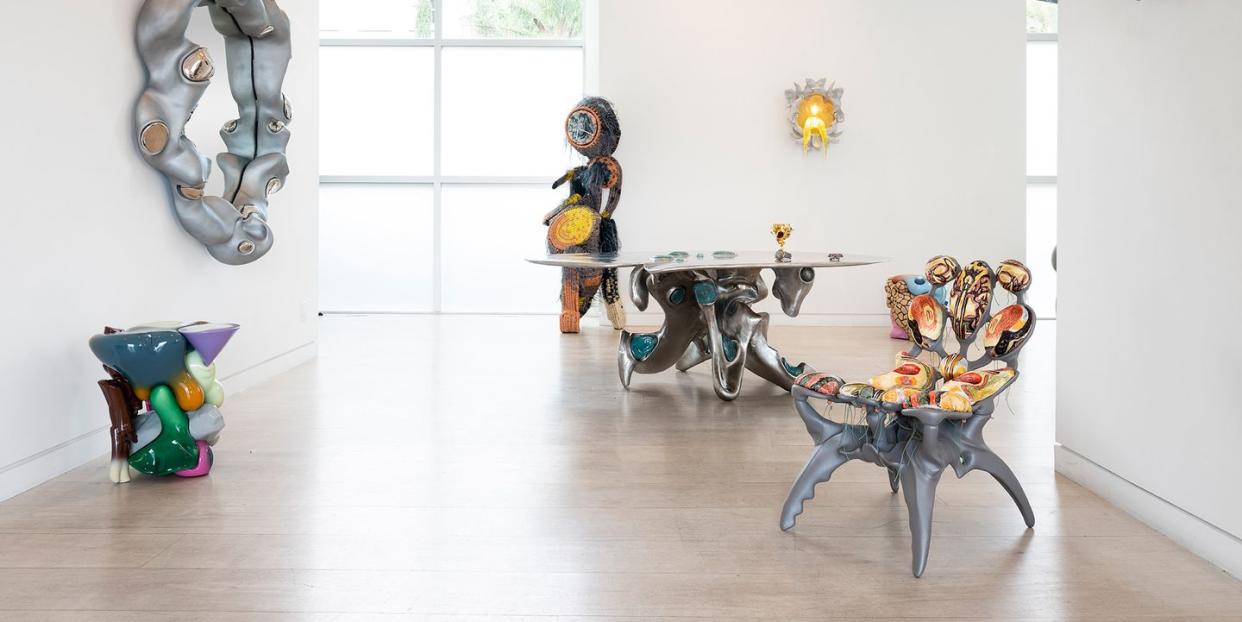
Spring is upon us and with it a whole bevy of gushworthy exhibitions. Below we’ve gathered our favorites—from new experiments in glass to underappreciated 17th-century masters. We hope you enjoy!
Loewe Foundation Craft Prize 2023
New York City
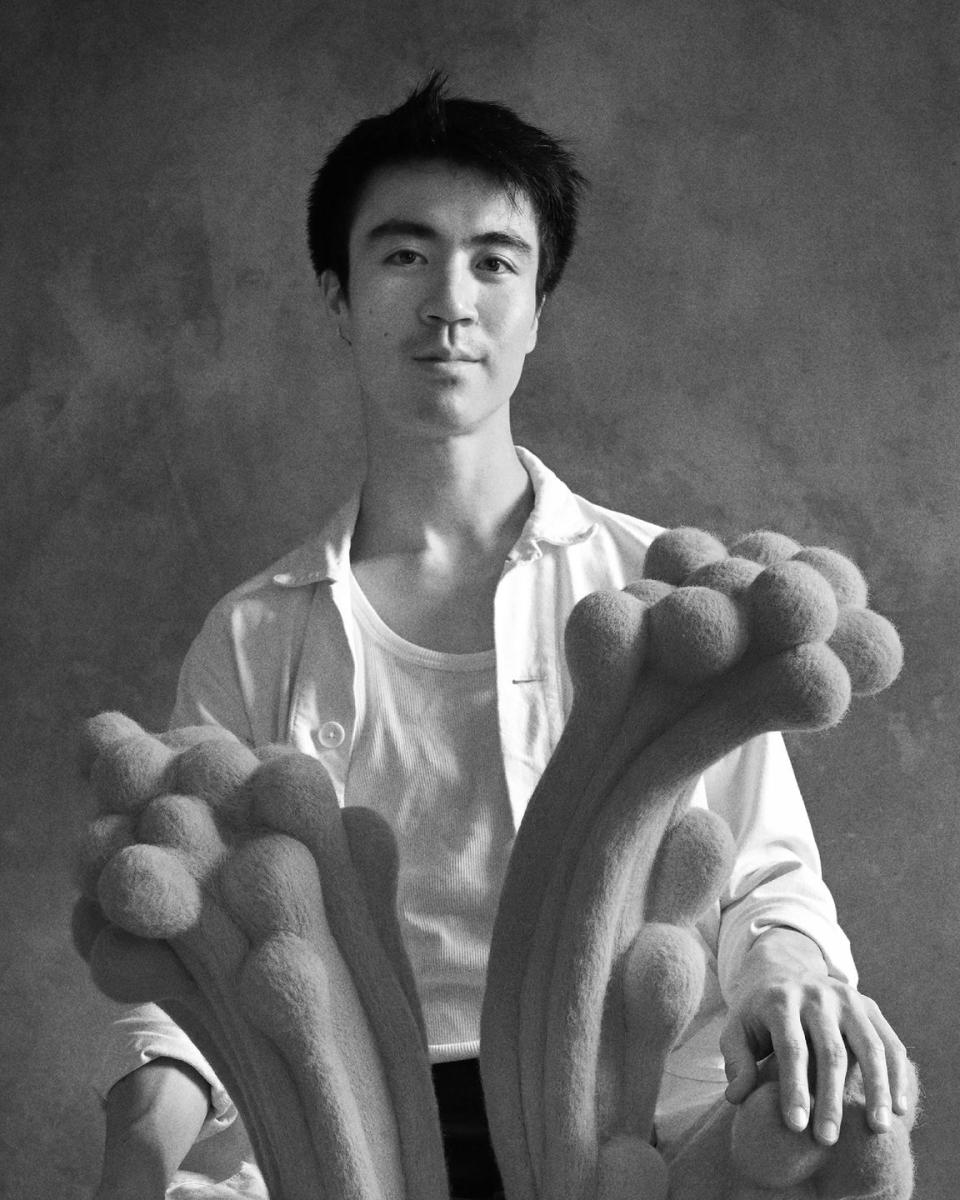
Launched in 2016, the Loewe Foundation Craft Prize has rapidly become a harbinger of greatness. From May 17, the work of the current crop of 30 finalists will go on display in the late artist Isamu Noguchi’s studio across the street from the Noguchi Museum in Long Island City—the first time a public exhibition has been staged in the space. Pieces on view include those by Tanya Aguiñiga, working in terra-cotta and synthetic hair; Claire Lindner, with glazed stoneware; and Liam Lee (above), whose sculptural felted wool and plywood chair references an imagined taxonomy of forms found in nature, provoking “a feeling of semirecognition,” he says. The prize experts panel, comprising curators, museum directors, and design writers, wanted to explore craft beyond its traditional definitions this year, and it shows. Through June 18. —Sean Santiago
“Ashes and Sand” at Schloss Hollenegg
Hollenegg, Austria
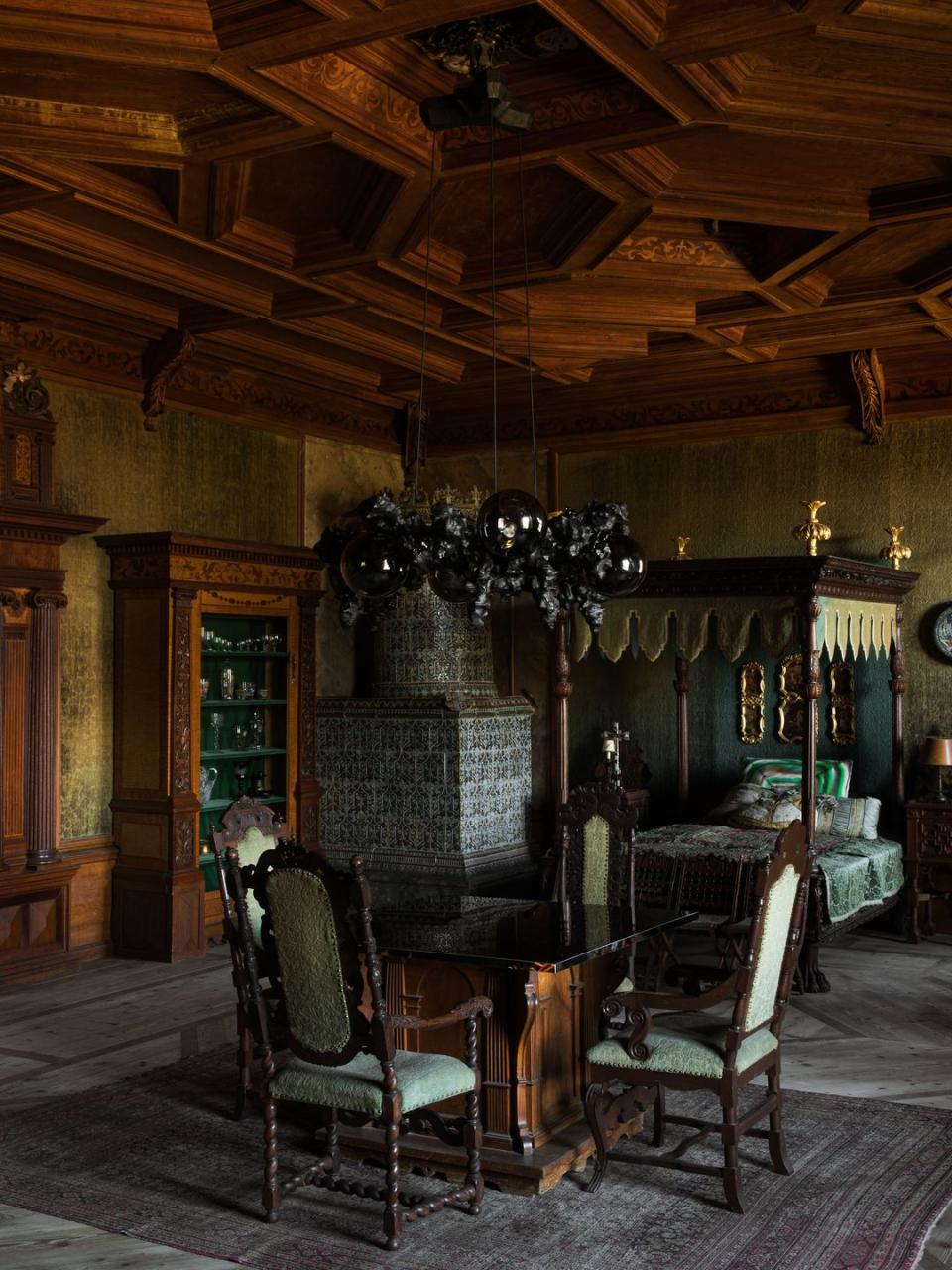
“Ashes and Sand,” Schloss Hollenegg’s newest exhibition is an artistic exploration of the malleable and manifold formal qualities of glass. The Austrian artist residency founded by Alice Stori Liechtenstein in 2015 has already been home to installations and experiments by architecture firm Charlap Hyman & Herrero, artist Katie Stout, Belgian designer Nel Verbeke, and English illustrator Katie Scott, providing a grand medieval backdrop for often quite radical contemporary design. For this exhibition, Liechtenstein, together with Rainald Franz, curator of glass and ceramics at the Museum of Applied Arts (MAK) in Vienna, gathered together 27 designers from around the world, whose work runs the gamut from hanging lights to drinking glasses to sconces and mirrors. All works are linked by an expansive approach to production, pushing the material at every stage—from ashes and sand to viscous fluid to solid forms—into new visual and conceptual spheres.
The presentation is that much more interesting for the textured historical context within which it’s presented. Tadeas Podracky’s Risen from the Ashes light looms like a malignant presence over a sumptuous Baroque bedroom, while Luca Gruber’s Oz lamps flank a colorful threshold under the watchful eyes of silk-swathed putti. Antrei Hartikainen’s Layers of Change vessels are almost inscrutable placed on and in the corners of a stone balustrade, while elsewhere a sconce by Natalie Weinberger looks almost like a slice of oil spill. The exhibition is magnificent and on view through May 28. —Camille Okhio
“Misha Kahn: Staged”
Los Angeles
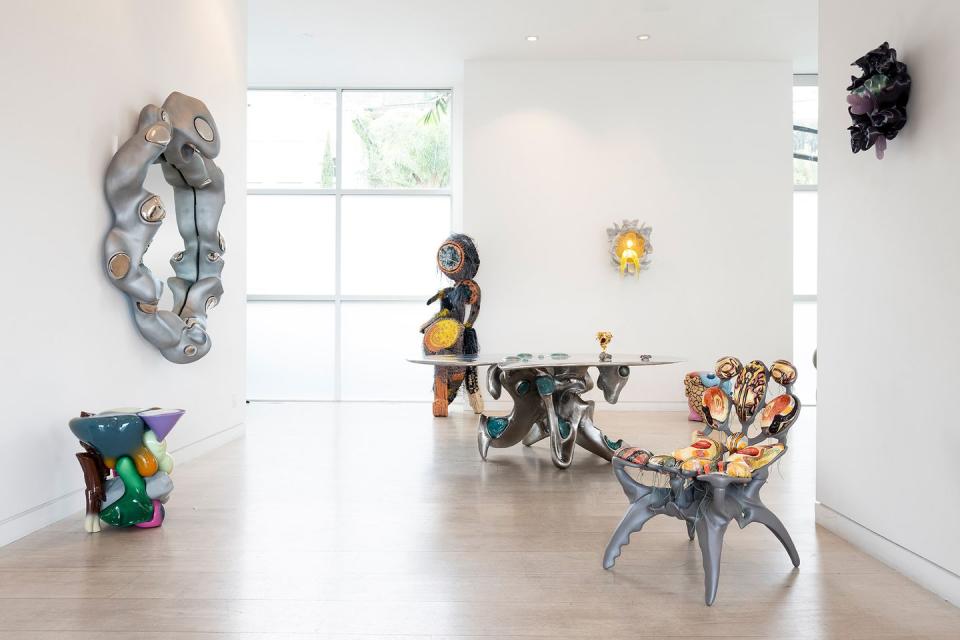
Misha Kahn’s new show at Friedman Benda Los Angeles comes in the wake of his appearance on the MTV series The Exhibit, in which he competed to win “the exhibit of a lifetime.” While he wasn’t the victor, he is still Misha Kahn. “Staged” sees the artist welcoming us into his “vortex,” a series of polished bulges and glandular blobs—a mix of furnishings, decorative objects, a tapestry—cresting into one another across the gallery’s bleached wood floor. “Rather than feeling inspired and sated by a new technique, I want more,” Kahn said in a release. “The results go from expansive to endless.” While the 2,800-square-foot gallery offers little in the way of domestic context, the work reads as a sort of rupture, Kahn’s experiments with digital art (he mounted an NFT sale with Christie’s in 2021) seen here as alien gesticulations toward corporeal needs, as if inviting viewers to microdose the metaverse. Sign me up. Through June 2. —S.S.
Tanya Aguiñiga at Volume Gallery
Chicago
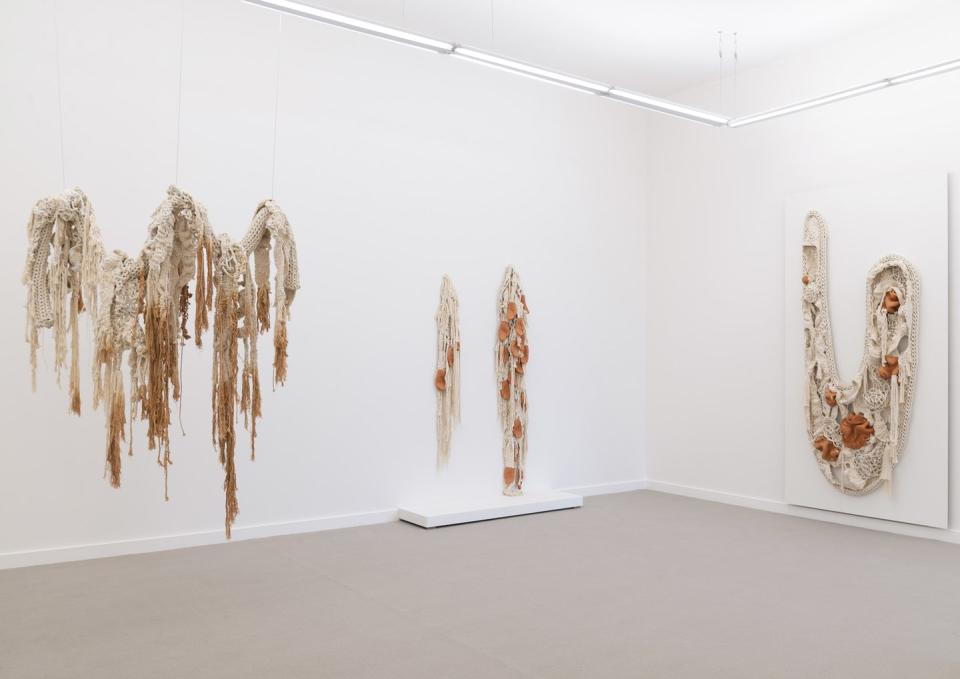
In “Swallowing Dirt,” Los Angeles–based artist Tanya Aguiñiga’s fifth show at Volume Gallery, weavings hang in place of the human body and suggest elements of an artist’s specific human experience. With textile sculptures suspended both from the ceiling and hung on the wall, Aguiñiga stretches what can be considered a portrait by incorporating vaguely human elements (like terra-cotta hands and internal organs) into forms that feel sentient and static in equal parts. Most of the work is constructed with cotton rope, some of it dyed with terra-cotta, while fired terra-cotta elements are woven in. Her bodies are also doorways, referencing a childhood spent crossing the border between Tijuana, Mexico, and San Diego daily, and form a bridge between her artistic concerns and her work as an activist. The show is wonderfully refreshing and impressive in scale. Open through June 17. —C.O.
“Unding: Restoration of Existence” at Carpenters Workshop Gallery
New York City
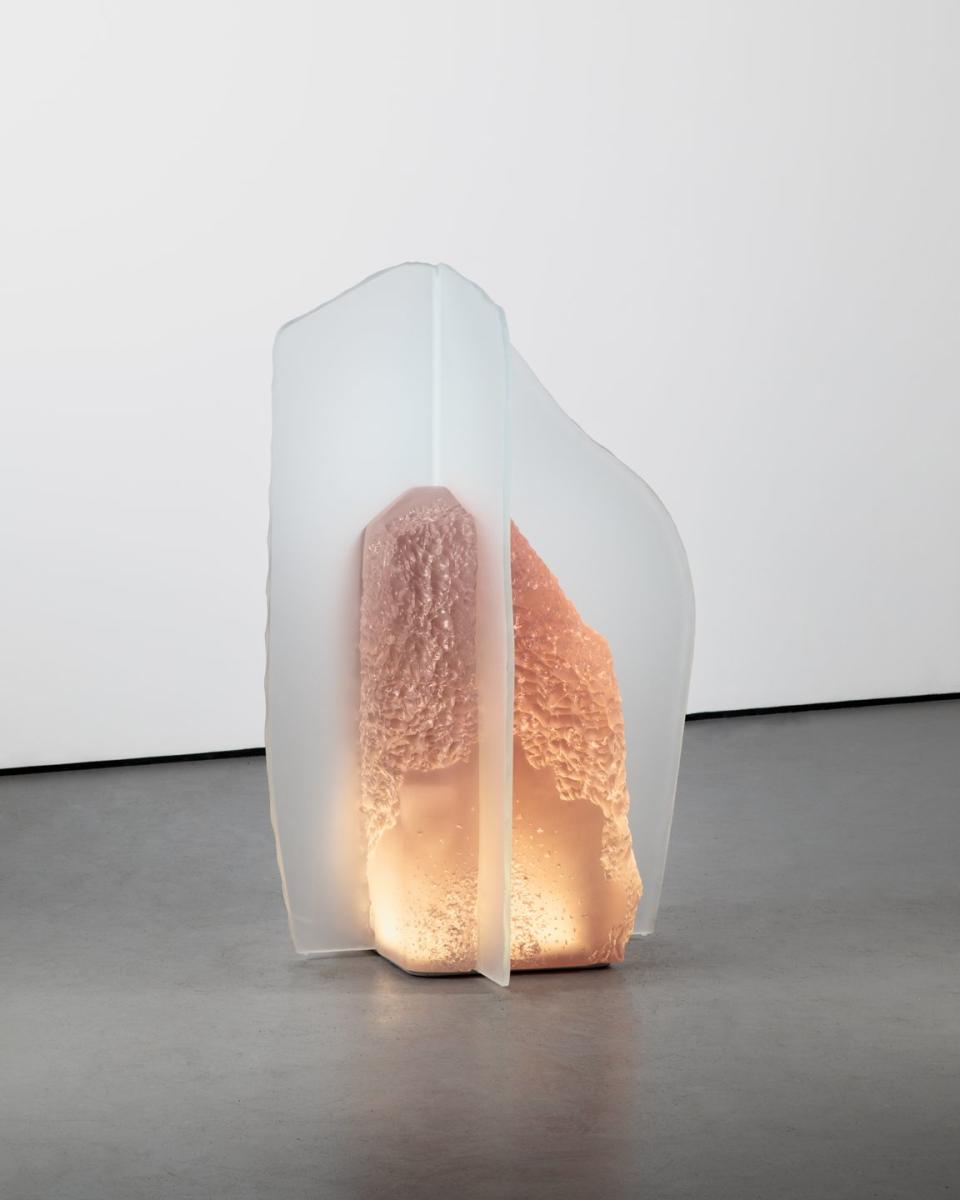
South Korean designer Wonmin Park’s solo show—his first in America—is part material study, part philosophical musing. The show’s name comes from German-Korean philosopher Byung-Chul Han, who defined unding as a “non-thing.” Park’s work combines the non-object with the object, juxtaposing transparent resin and glass works with substantial stone and steel. These designs, which represent his Plain Cuts_Stone collection and Plain Cuts_Remediated, range from an ethereal floor lamp inspired by volcanic formations to a Brutalist low table defined by its linearities. The organic, colorful former creates a symbiotic relationship with the rugged, geometric latter to generate contemplative reflection. Through July 28. —Helena Madden
“Animalistic Tendencies”
New York City
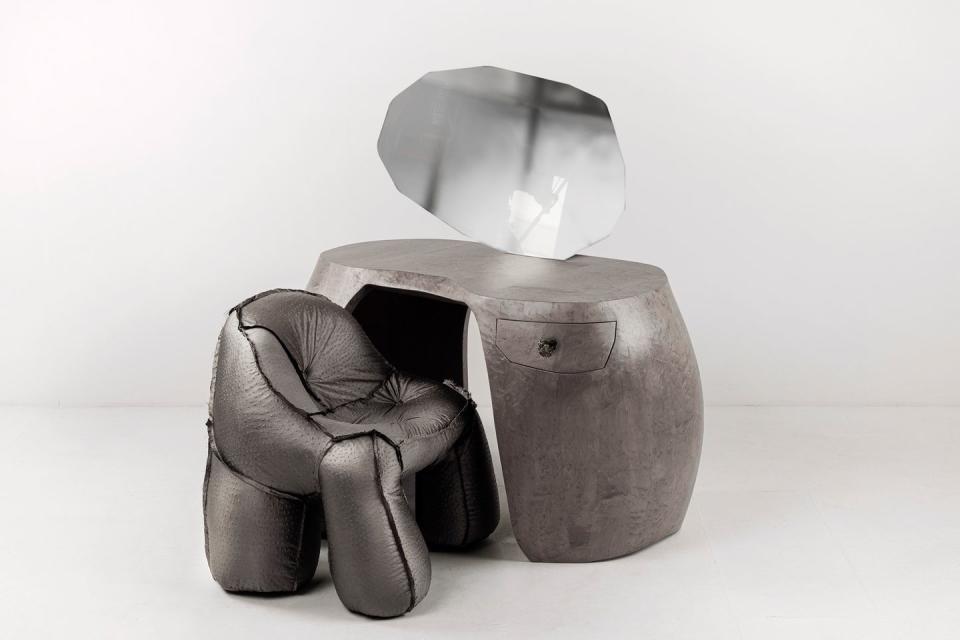
At first glance, the work of artist Charlotte Kingsnorth can read a bit macabre. There are the inescapable Louise Bourgeois allusions in the flocked metal legs of an arachnid stool; patchwork puffy chairs with Frankenstein-esque seams that feel as if an AI were prompted, What if Mary Shelley had written a sequel about the cobbling together of sheep?; and ceramic sconces that appear to have been whipped up out of insulating foam. Her show at Objective Gallery, “Animalistic Tendencies,” even features one wall accented with a drawing of a figure tied to a chair, sketched by Kingsnorth herself so that she might better see how flesh would fall against the seat (the sitter remains a friend). Despite all this, or perhaps because of it, Kingsnorth retains a rather sunny disposition and a sense of wonder remains at the core of her practice. The ceramics were indeed born from material explorations in foam, refined during a residency at the nonprofit EKWC in the Netherlands. An evolution of one of her first pieces, a fleshy loveseat, is set on a pedestal in the middle of the exhibit, palpably tactile and deliberately beyond reach. It may sum up Kingsnorth’s work best: not an invitation to touch but to marvel at the fact that we can feel at all. Through June 30. —S.S.
Juan de Pareja at the Metropolitan Museum of Art and the Hispanic Society
New York City
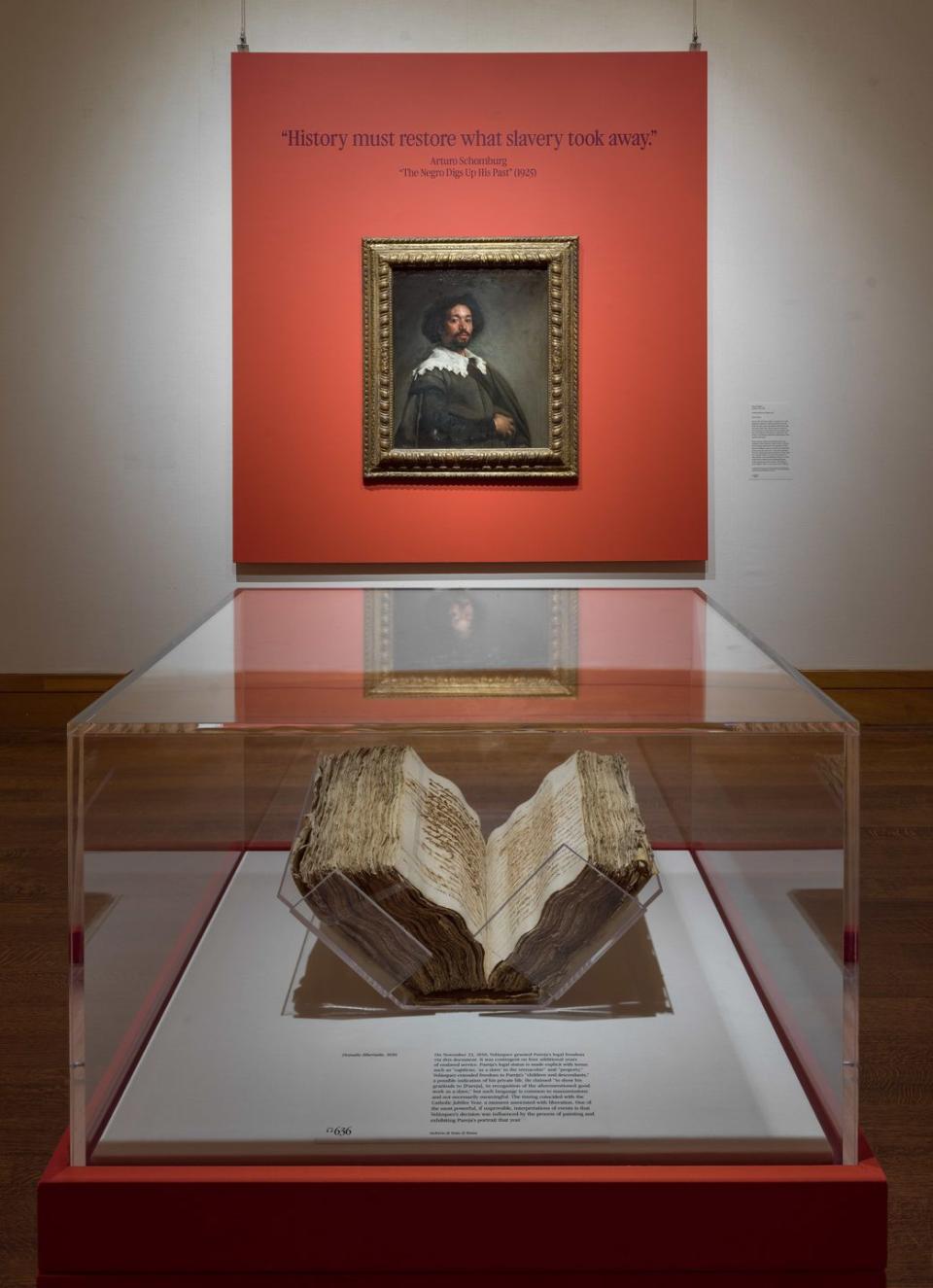
Old Masters have been studied and celebrated as an entirely white, mostly male field of study for the last several hundred years, sadly excluding some of most compelling players in a textured, multigendered, multiracial game. The Metropolitan Museum of Art has made an attempt at rectifying the canon with a show on Juan de Pareja, the Black Spanish painter whose iconic portrait by Diego Velázquez (his owner for 20 years), has been in the Met’s collection for decades. Curated by Vanessa K. Valdés and David Pullins, the show incorporated a wide range of informed voices, many of them Black and Latino, in both the research of the show and the content that was presented.
In one room, photographs by Black Puerto Rican scholar Arturo Schomburg (whose collection is currently housed in Harlem) are displayed among articles and primary sources unearthed as he undertook much of the first scholarship on de Pareja. In the central room of the show, paintings by Velázquez, who freed de Pareja only toward the end of his life, after benefiting from his great skill as an enslaved worker in his studio, are arranged around the perimeter. A few are particularly sensitive—one of a young woman, circa 1650, and a portrait of Pope Innocent X from 1650 stand out. Of course, de Pareja’s portrait by Velázquez also hangs in this room, showing the sitter as deeply observant, with gleaming, intelligent, if slightly morose, eyes.
The jewels of the show are de Pareja’s manumission papers, with which Velázquez granted his freedom in 1650. Centered in the room, they radiate overwhelming and emotional significance. Outside of the central gallery hang paintings from an intimate to a massive scale that de Pareja completed after he was freed. They exhibit a development in his style and subject matter wholly separate from Velázquez. And if, like me, you aren’t satiated by the relatively small number of works on view, you can head up to the Hispanic Society for a satellite show of de Pareja’s works. Here the star is a copy of Velázquez’s portrait of de Pareja by Schomberg, along with a more recent copy by contemporary artist Jas Knight. The importance of these two shows and exceptional quality of de Pareja’s work and life cannot be emphasized enough. On view through July 16. —C.O.
“Beauty in Paradox: A Survey of Clay” at Bernd Goeckler
New York City
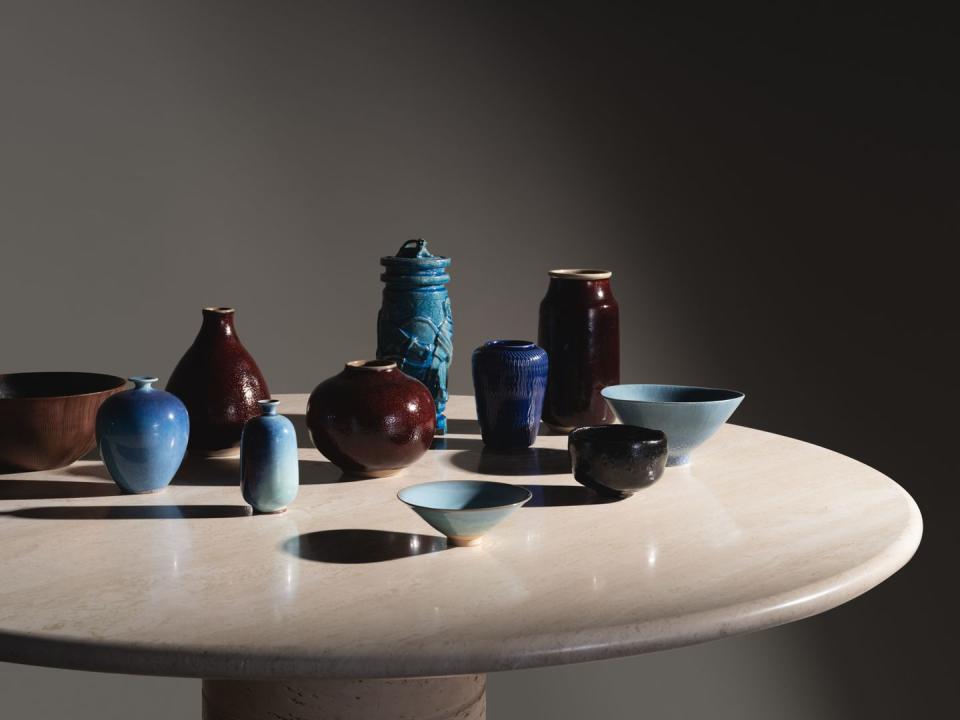
Clay is one of our oldest and most constant mediums, stretching back thousands of years and taking shape in ceramic vessels, jewelry, and more. A new show at Bernd Goeckler celebrates both the material’s past and present, setting vintage objects alongside the works of contemporary ceramists. It’s a wide survey—one that encompasses both the textural work of Peter Lane and the intricate, handprinted details of Meissen tea cups. Other artists represented include Shizue Imai, Trevor King, Scott Daniel, and Stephanie Morton-Millstein, with the latter introducing a new series of sinuous creations. The titular paradox lies in the material itself, which simultaneously embodies both strength and fragility. Through May 31. —H.M.
“Renew” with Toast and Upstate Diary
Hudson, New York
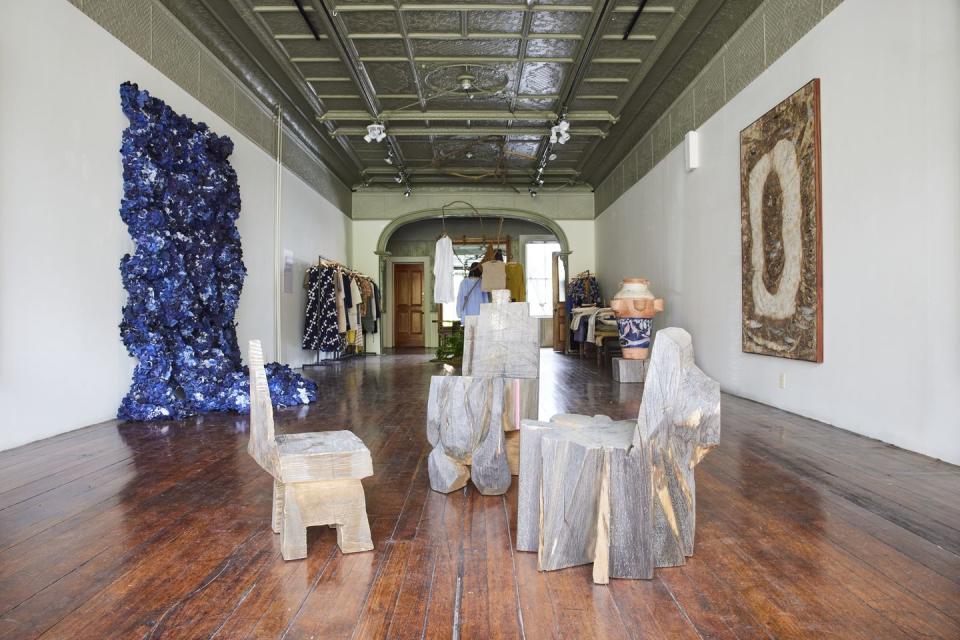
Toast, the 25-year-old British clothing brand, known for its socially and eco-conscious approach to production, recently partnered with Upstate Diary on an exhibition at 415 Warren Street in Hudson, New York. “Renew” includes work from five artists, all working with repurposed materials. In one window hangs a patchwork textile by Kiva Motnyk—almost like “stained glass,” says one visitor. Directly as you enter the space, you encounter a grouping of rough-cut stools hewn from naturally felled trees, enlivened by slices of color within cracks in the wood. A large, decoratively painted ceramic by Dana Sherwood and sensitive, botanical testimonies by Sam Falls also delight. But perhaps the most immediately impressive work on view is a fabric sculpture of tremendous scale by Kat Howard: In a deep blue hue (courtesy of scrap denim from Toast’s studio), it cascades like waves of the wall, beautifully living up to its title, Tempest. On view through May 29. —C.O.
You Might Also Like

